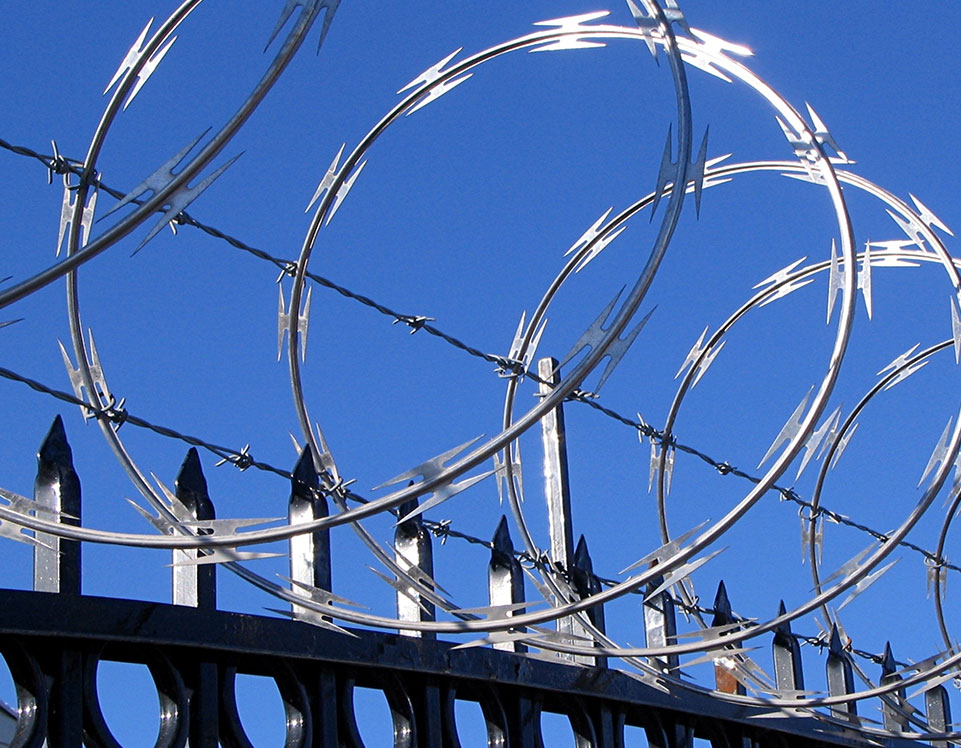The Ultimate Guide to Fiber Optic Protection Equipments for Your Service
In a period where safety problems are extremely important for organizations, comprehending the complexities of fiber optic innovation can be transformative. This guide lays out just how incorporating fiber optic protection systems not only improves information security but also provides benefits like resistance to interference and real-time monitoring capacities.
Recognizing Fiber Optic Technology

The core of a fiber optic wire is composed of a thin glass or plastic facility, surrounded by a cladding layer that reflects light back right into the core. Single-mode fibers are designed for long-distance transmission, while multi-mode fibers are appropriate for much shorter ranges, often made use of within buildings.
Fiber optics are not only quicker however additionally a lot more secure than typical wiring. Their integral resistance to electromagnetic interference and the problem of using the signal without discovery make them a favored option for companies prioritizing information honesty and security. As organizations increasingly count on safe and efficient interaction systems, understanding fiber optic technology comes to be essential for informed decision-making.
Trick Benefits of Fiber Optic Protection
When taking into consideration safety alternatives for an organization, the advantages of fiber optic systems are especially engaging. Fiber optic modern technology supplies outstanding data transmission rates and bandwidth capability, making it perfect for handling high-resolution video feeds from monitoring video cameras. This capacity makes certain that protection personnel receive real-time data, boosting overall response times to potential safety and security threats.
Additionally, fiber optic cables are naturally resistant to electro-magnetic disturbance, which can jeopardize the stability of typical copper-based systems. This resistance ensures that the data transmitted remains safe and nonstop, providing a much more dependable security framework. Additionally, fiber optics are much less susceptible to physical damage, as they are made from glass instead than steel, reducing maintenance prices and downtime.
Another substantial advantage is the boosted scalability of fiber optic systems. As company needs develop, fiber networks can be easily expanded to accommodate additional safety and security gadgets without significant overhauls to the existing facilities. Finally, fiber optic systems offer improved cybersecurity features, including file encryption capacities that protect sensitive data from unauthorized gain access to. Collectively, these benefits make fiber optic security systems a robust option for services looking for to boost their security measures.
Setup Process and Considerations
Thinking about the intricacies entailed, the installation process of fiber optic security systems requires careful preparation and execution. The first step includes a comprehensive site analysis to recognize ideal places for cabling and equipment. This evaluation ought to take into consideration environmental aspects, existing facilities, and possible vulnerabilities.

Furthermore, the installation must abide by regional building regulations and industry criteria. This may consist of Recommended Site coordinating with various stakeholders such as structure managers, IT groups, and protection workers to make certain smooth integration with existing systems.
Post-installation, extensive screening is necessary to verify system efficiency and determine any kind of issues that may emerge. By focusing on these factors to consider during the setup process, businesses can ensure a durable and efficient fiber optic security system that fulfills their particular security demands.
Newest Innovations in Fiber Optic Security
Current innovations in fiber optic innovation have actually click here for more considerably enhanced the capacities of safety and security systems for organizations. One of the most notable technologies is the assimilation of fiber optic sensing units that can identify resonances and intrusions along the border of a center. These sensors offer real-time monitoring, enabling fast feedback to prospective breaches.
Additionally, the advancement of dispersed fiber optic picking up modern technology enables for the constant surveillance of big areas with a single fiber cable. This method not only decreases setup expenses yet also improves the reliability of monitoring systems by removing the requirement for several, separate sensing units.
Moreover, innovations in multiplexing strategies have allowed businesses to send substantial quantities of data over fiber optic networks, improving the capabilities of video security systems. High-def video feeds can now be sent out over cross countries without loss of high quality, making certain that safety and security workers have accessibility to clear and actionable details.
Lastly, making use of man-made intelligence (AI) along with fiber optic systems is revolutionizing risk discovery. AI formulas can examine data from fiber optic networks to identify unusual patterns or behaviors, allowing for positive protection steps. These advancements collectively represent a significant jump ahead in fiber optic protection modern technology.
Choosing the Right System for Your Service
Picking the appropriate fiber optic protection system for your organization is important for guaranteeing optimal protection and comfort. To make an informed selection, evaluate your certain security demands, considering factors such as the dimension of your facilities, the nature of your operations, and possible vulnerabilities.
Begin by reviewing the level of protection called for; for instance, high-risk click this site atmospheres might require sophisticated systems with incorporated surveillance and invasion discovery abilities. Next, take into consideration scalability; as your service grows, your safety system need to can broadening to suit enhanced needs without considerable overhauls.
In addition, examine the dependability and performance of numerous systems. Search for service providers with well-known credibilities and consumer reviews that vouch for their solution quality. It's additionally suggested to ask about the innovation's compatibility with existing facilities, making sure a smooth assimilation process.
Verdict
In conclusion, fiber optic safety and security systems present a robust remedy for boosting company safety facilities. The combination of high-speed data transmission, resistance to electro-magnetic interference, and progressed surveillance capabilities significantly boosts general security (fiber optic security system). By comprehending the technology, identifying its advantages, and thinking about the installation procedure, organizations can make educated decisions. The current developments further boost the efficiency of these systems, making sure that services continue to be secure and adaptable in an ever-evolving risk landscape.